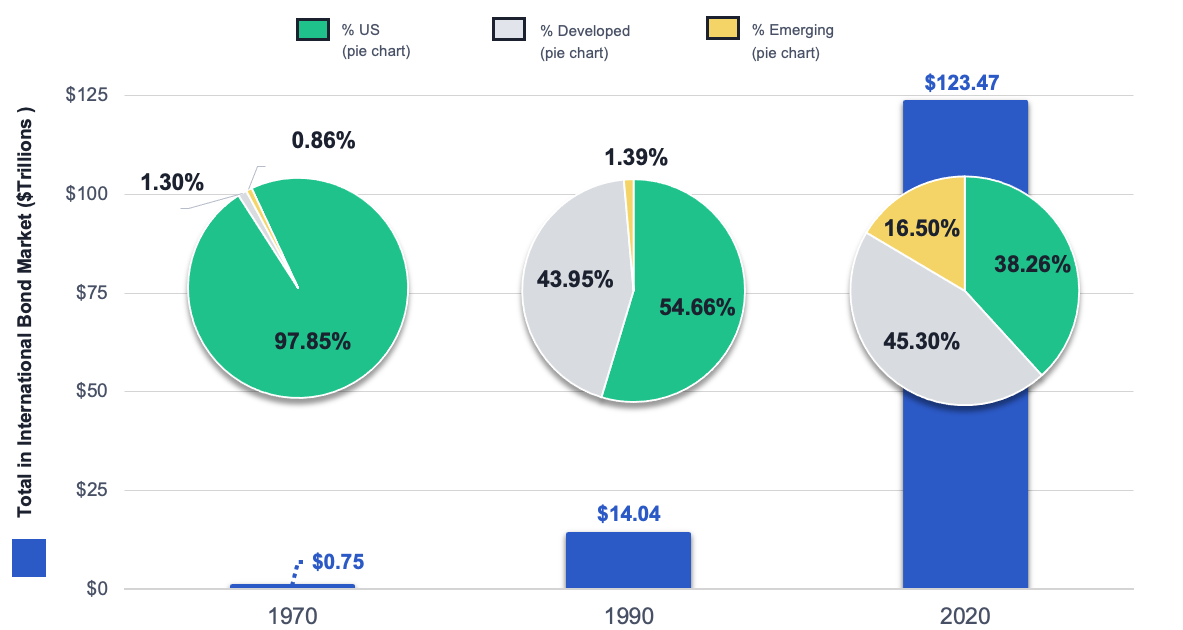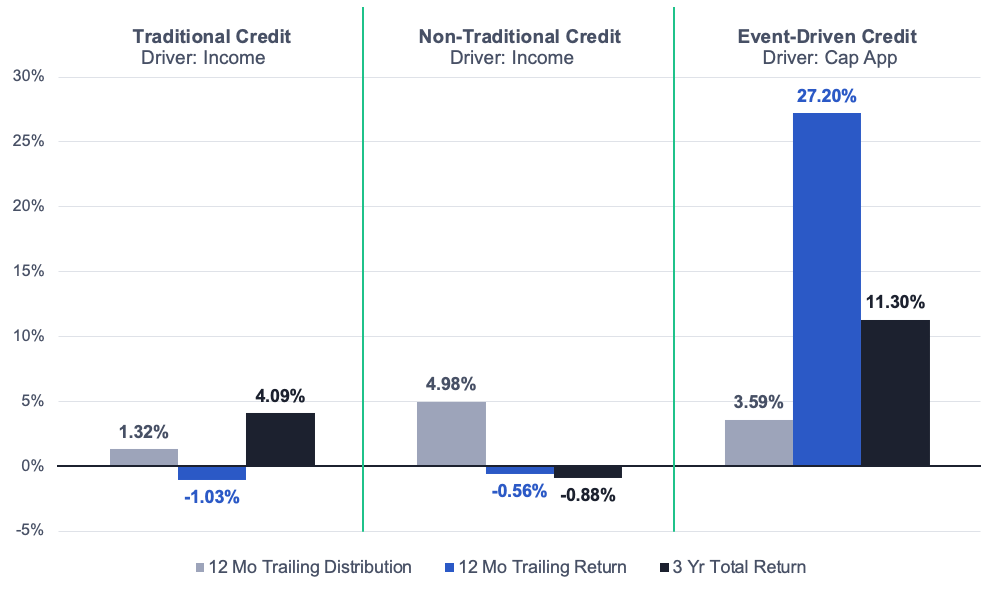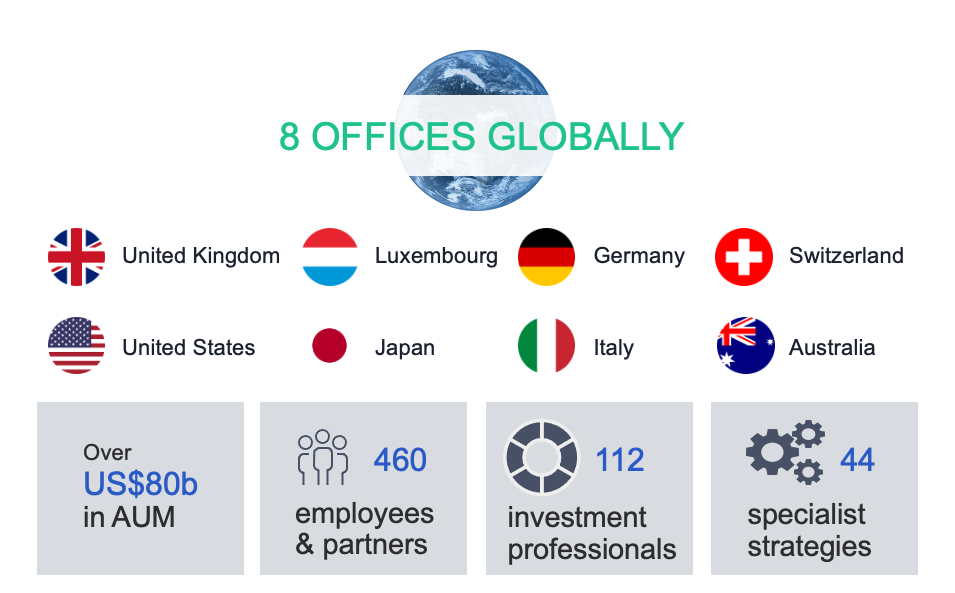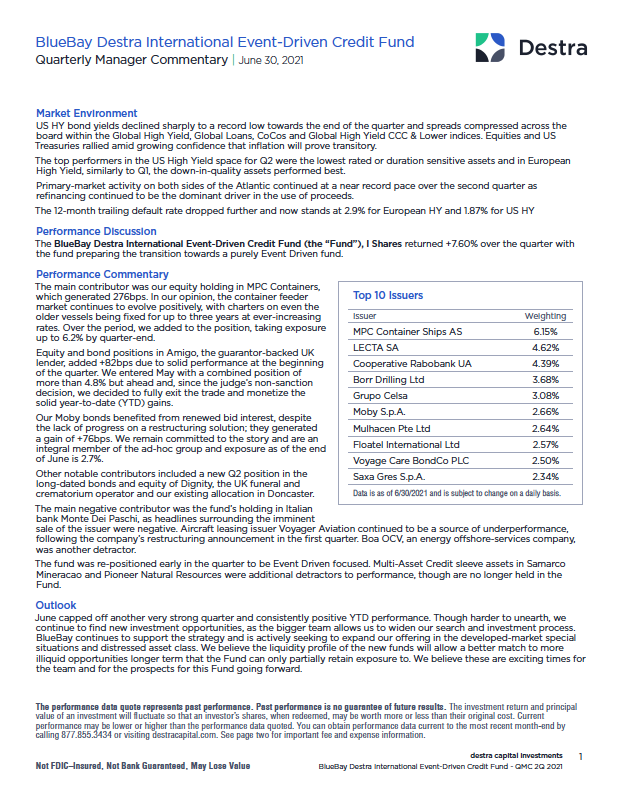Active Management and International Event-Driven Credit
Why International Credit
Let’s talk about market perceptions vs realities. One in particular that we think may present great potential for investors.
US investors have a very strong “home bias” in their portfolios. Global and international exposure is very low on average for US investors and particularly for individual investors, even high net worth ones.
But as this chart shows, the growth of global markets has been astronomical in the last 50 years. We have gone from an almost exclusive US market, circa 1970 to one, where we are approaching near parity between US bond markets, other Developed markets and Emerging Markets in terms size and scope.
This is the first important point for US investors to consider….don’t confine your opportunity to set to only 30-something percent of all the options available. Open up the range of possibilities.
International Bond Market Capitalization vs % Breakdown (1970-2020)

Source: GlobalMacro Partners, IMF, World Bank, Bank of International Settlements, NBER, SIFMA. Please note that the information shown above is for illustrative purposes only. Past performance is no guarantee future results.
Why Event-Driven Credit
This historically low yielding environment is leading many investors to take on much more risk then they may realize or understand.
Some may fall into the Income Trap. Something akin to the Value Trap in stocks, where investors buy stocks they think are cheap, only to find out the companies have poor prospects and the stock can and often does go much lower.
Credit Income vs. Credit Outcome

Source: Morningstar Direct, Data as of 9/30/2021
Traditional Credit = iShares Core Global Aggt Bond ETF USD (AGGG)
Non-Traditional Credit = Morningstar US CE Non-Traditional Bond Category
Event-Driven Credit = BlueBay Destra International Event-Driven Credit Fund (CEDIX)
As this chart shows, in the trailing 12 months, the shift from traditional out to non-traditional has not worked well on average.
You could have achieved the same result by leaving the money in the bank at zero interest rates and just taken out 2 ¾% over the last year and you would have been exposed to a lot less risk.
This is the Income Trap that investors must be vigilant of. There is no free lunch out there.
But by investing in a very unique way. One that has a goal and an objective of total return, perhaps even equity like returns, and that may, though not a primary focus, capture a little income along the way.
What is Event-Driven Credit?
Event-driven credit investing focuses on securities of companies facing a corporate, market or regulatory event. The goal is to identify securities with a favorable risk-reward ratio based on the likely outcome, as a result of such event occurring.
Such events include, but are not limited to, corporate events, such as restructurings, spin-offs, mergers and tender offers; significant litigation; initial and seasoned debt or equity offerings; launches of new products; regulatory changes; analysts meetings; earnings announcements; covenant issues; bankruptcies; corporate reorganizations; shareholder activism; and significant management and external changes that dramatically change the company’s profit margins. Opportunities in this area are created by the reluctance of traditional investors to assume the risk associated with certain corporate, market or regulatory events.
Event-driven credit is broken down into five distinct sub-categories by the BlueBay team:

BlueBay Asset Management: International Fixed Income Specialist
Because event-driven credit investing is an institutional strategy, having world class expertise, resources and a skilled team is critical, which is why we teamed up with BlueBay Asset Management, one of Europe’s largest and most successful alternative fixed income managers.
I'd Like to Receive More Information
Let us run a no obligation comparison of your current credit products with our strategy.

BlueBay is a subsidiary of Royal Bank of Canada.
Source: BlueBay Asset Management as of 9/30/2021. Notes: Leveraged Finance consists of High Yield, Leveraged Loans and Distressed Credit; Multi-asset Credit AUM includes US$3.26 billion of Leveraged Finance assets and US$711 million of Structured Credit assets.
Additional Information
If you'd like to know more about the Fund, or just simply hear more about BlueBay and their capabilities, please call Destra at 877.855.3434.

